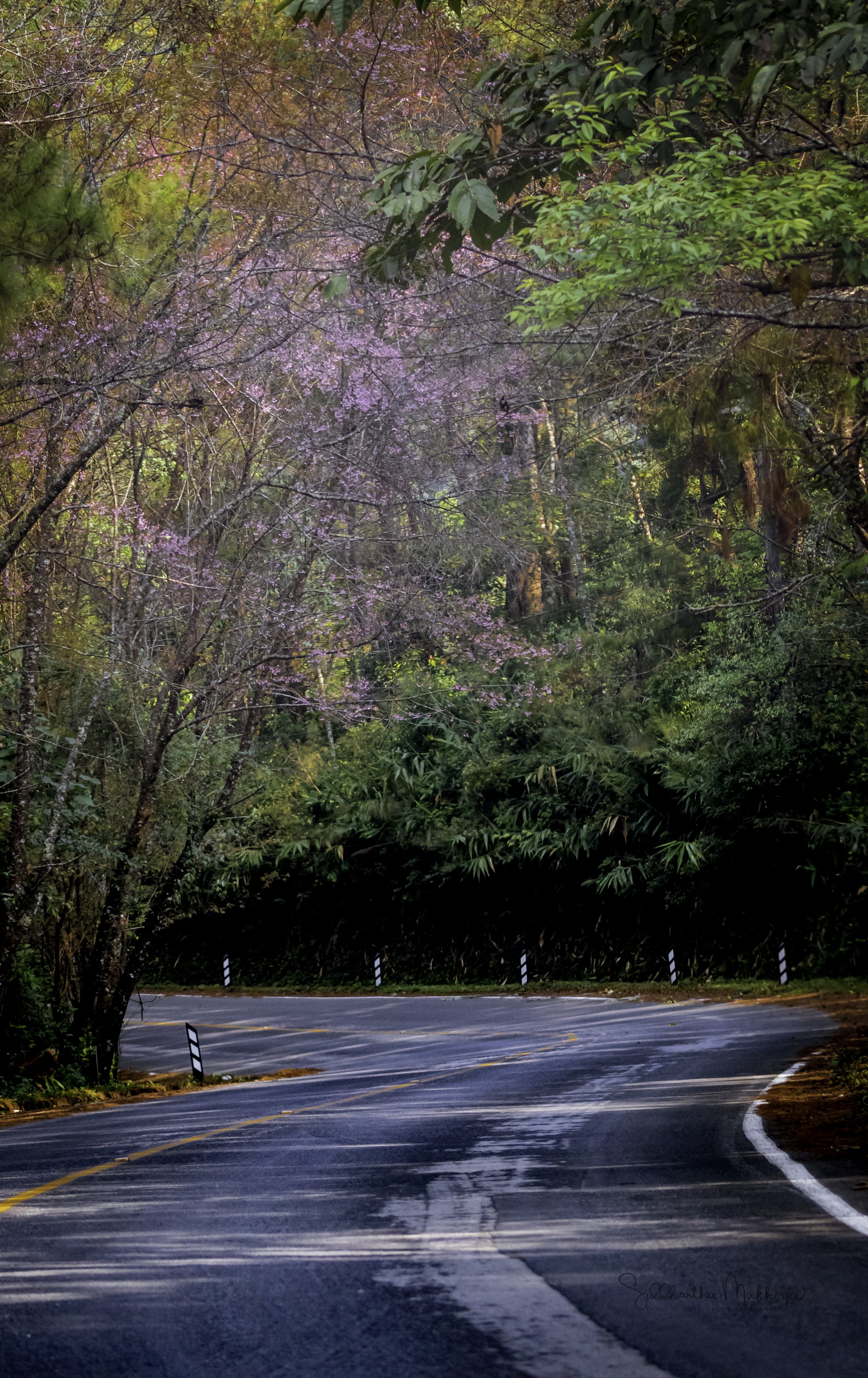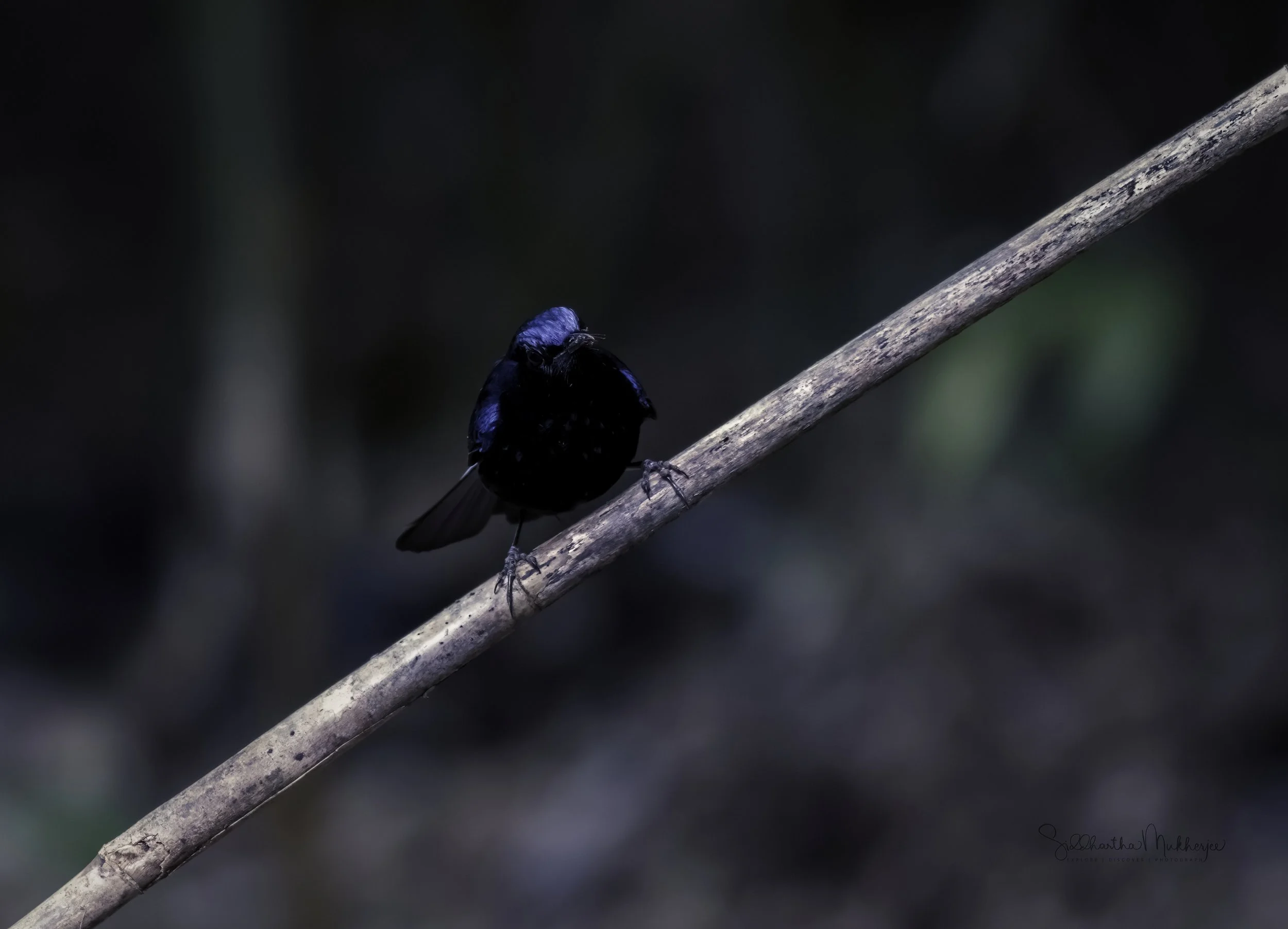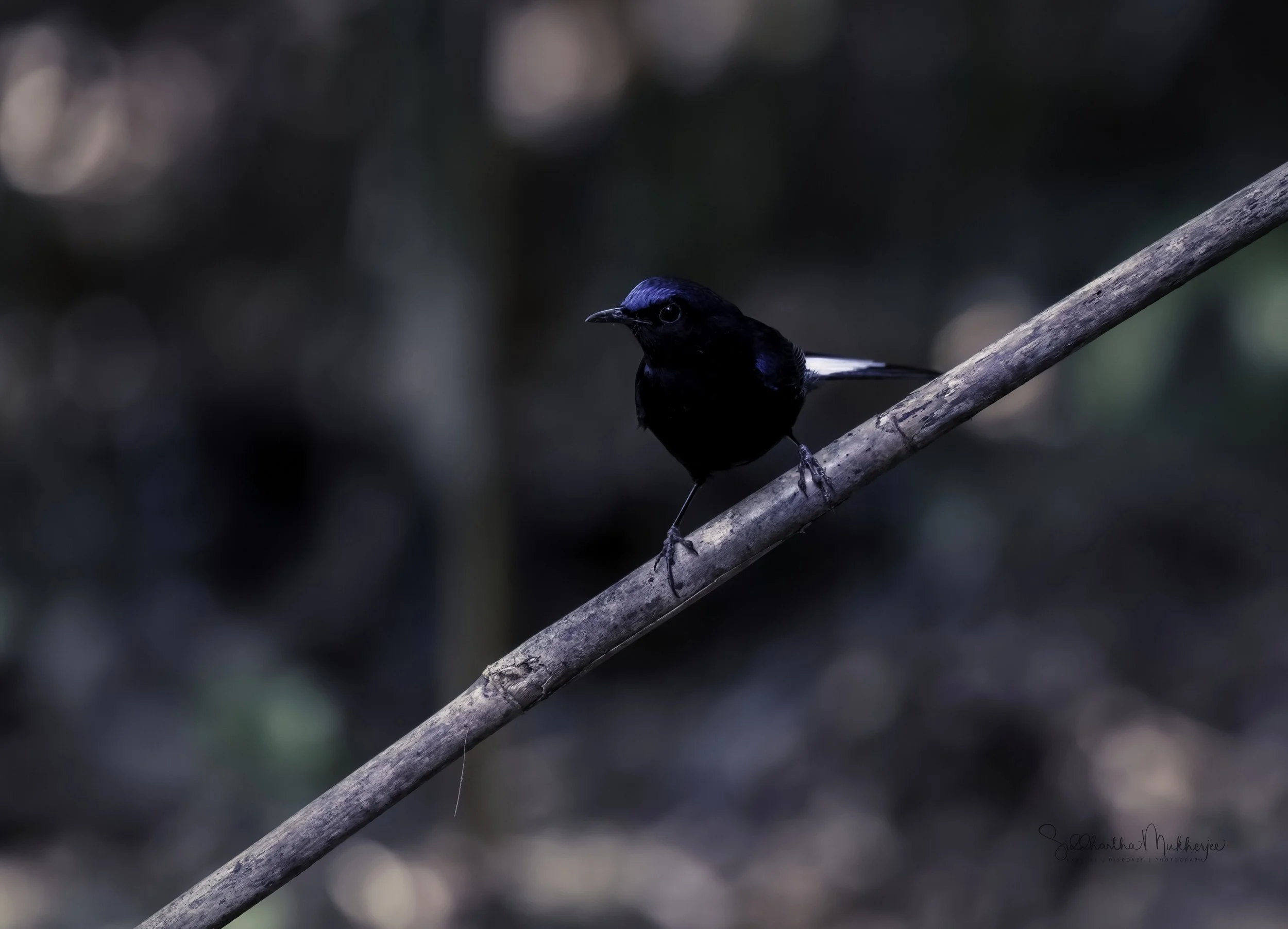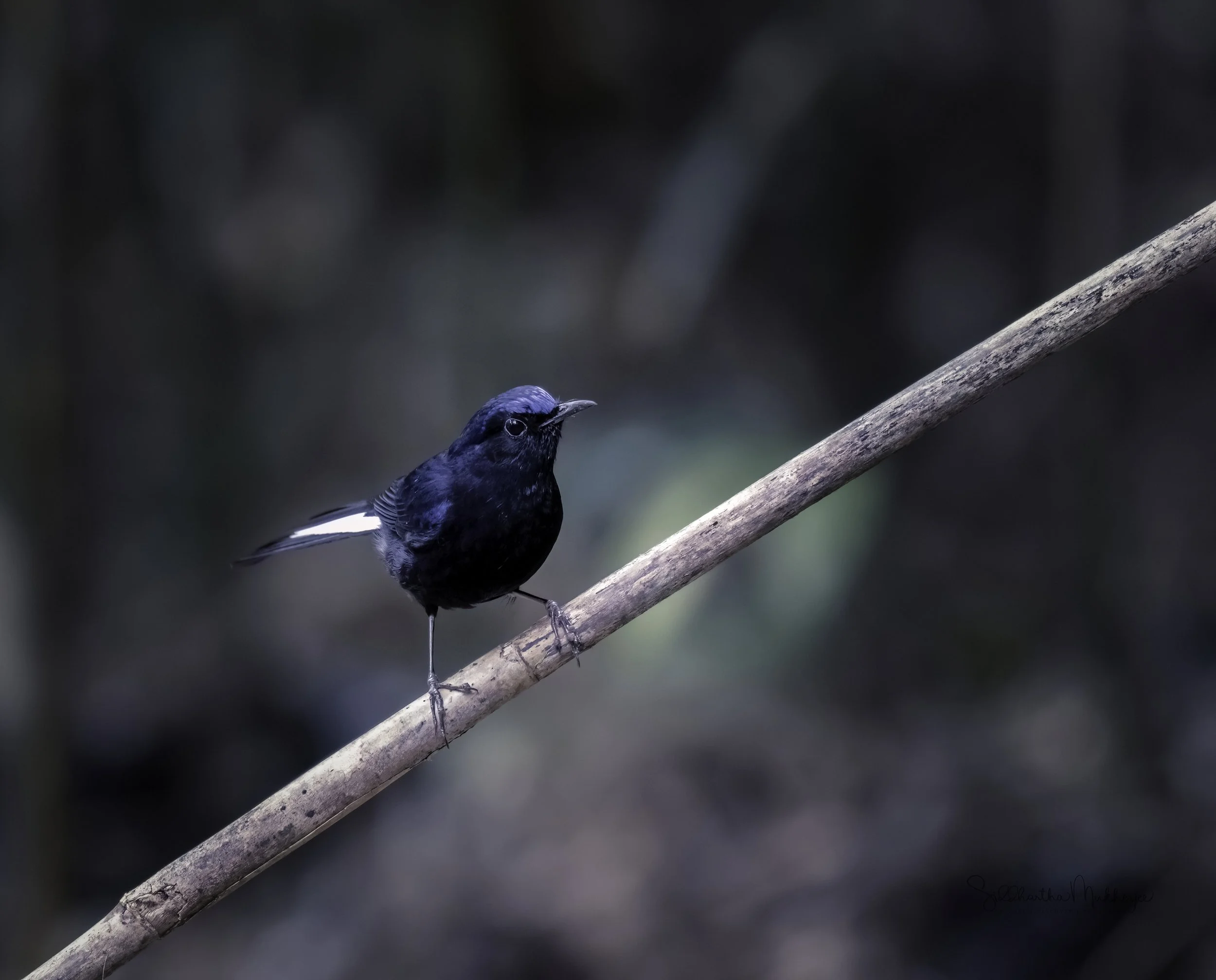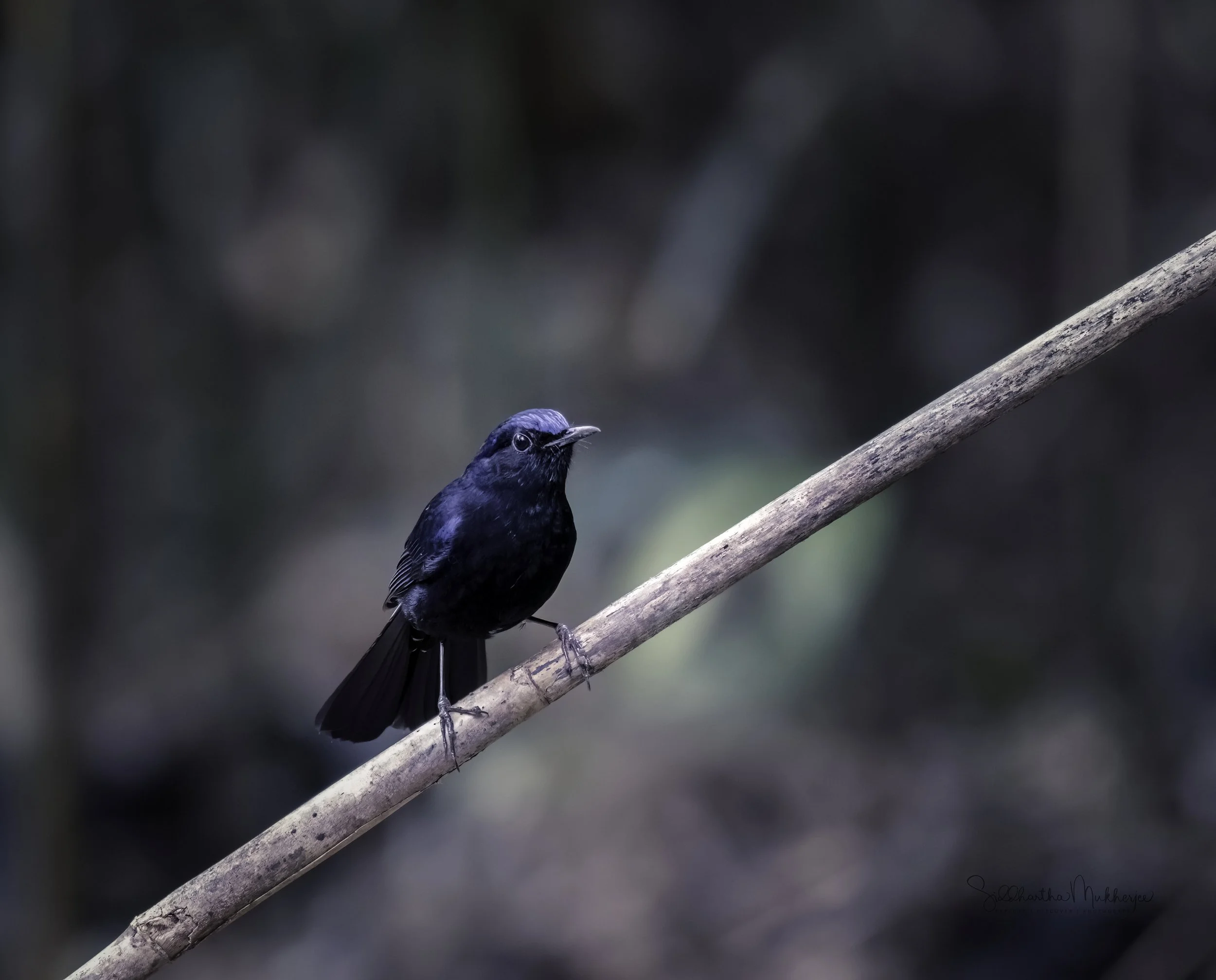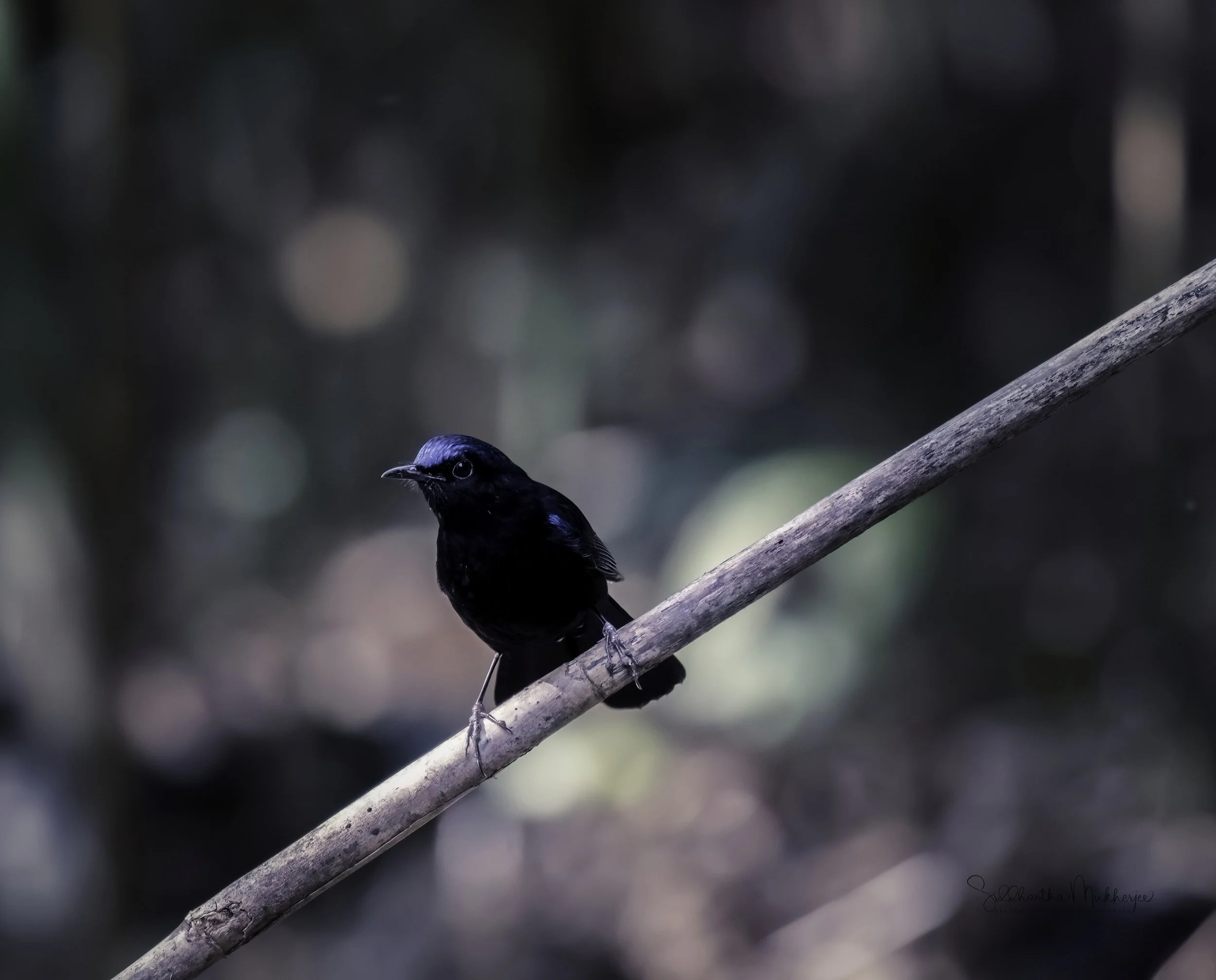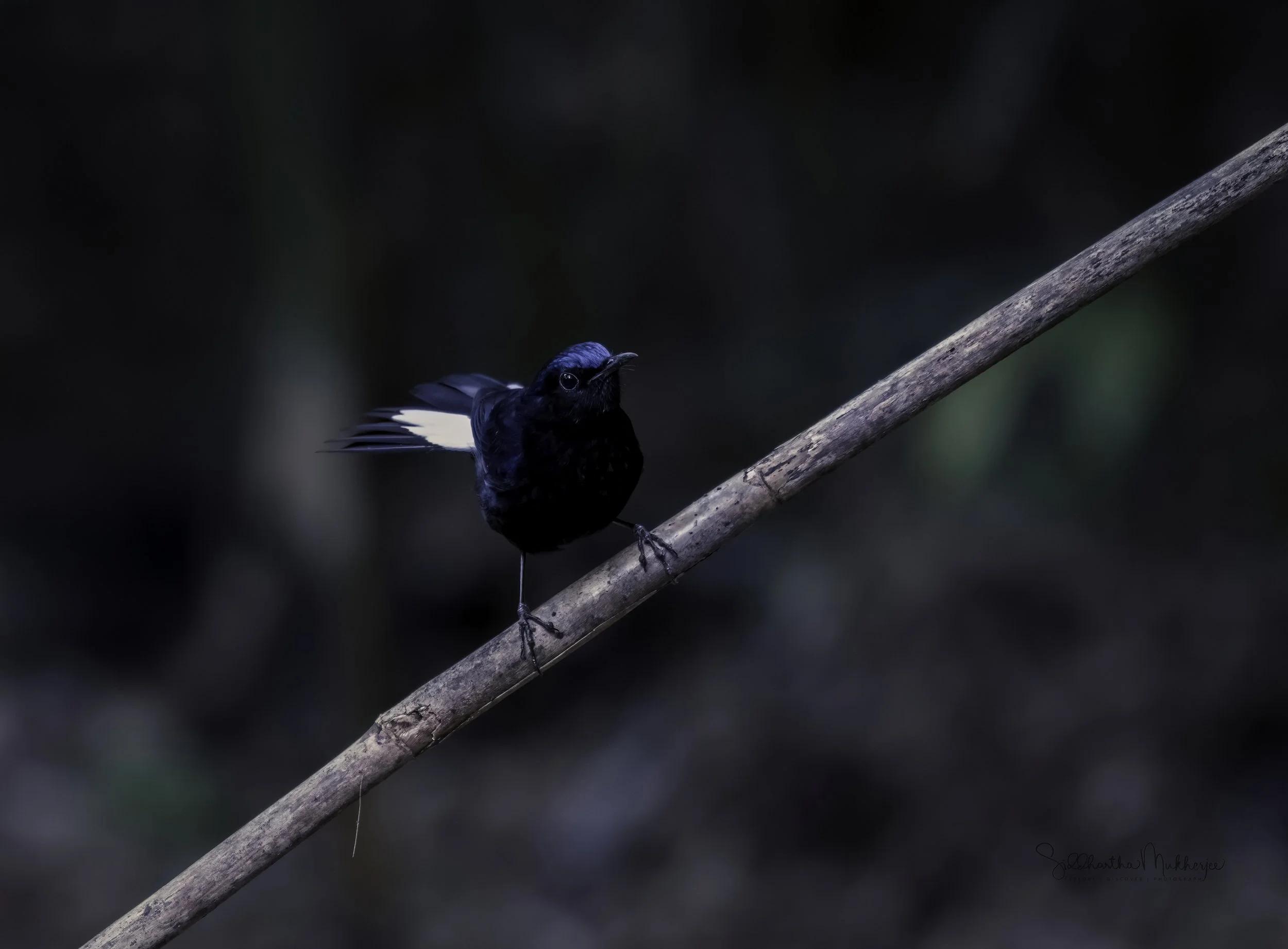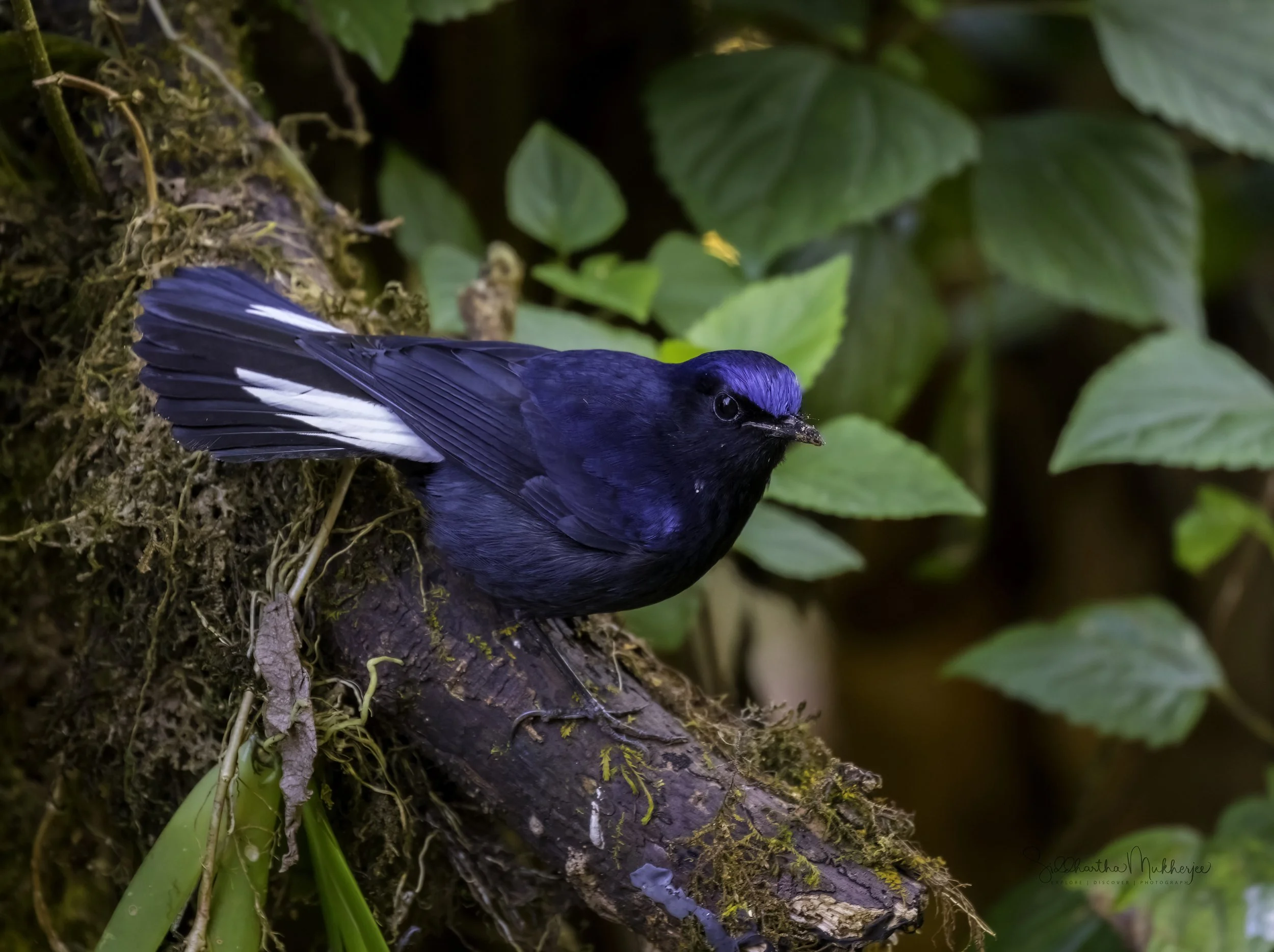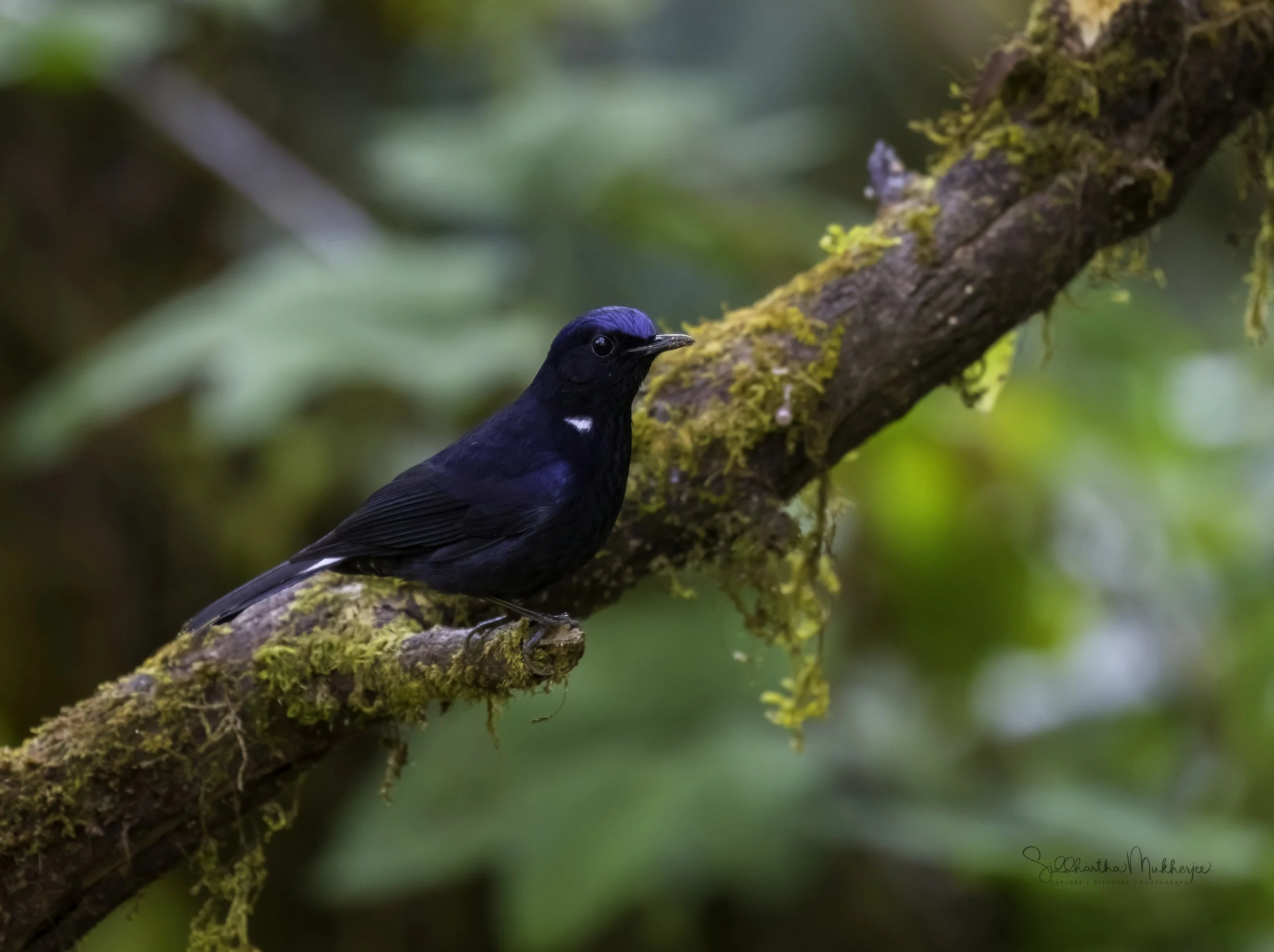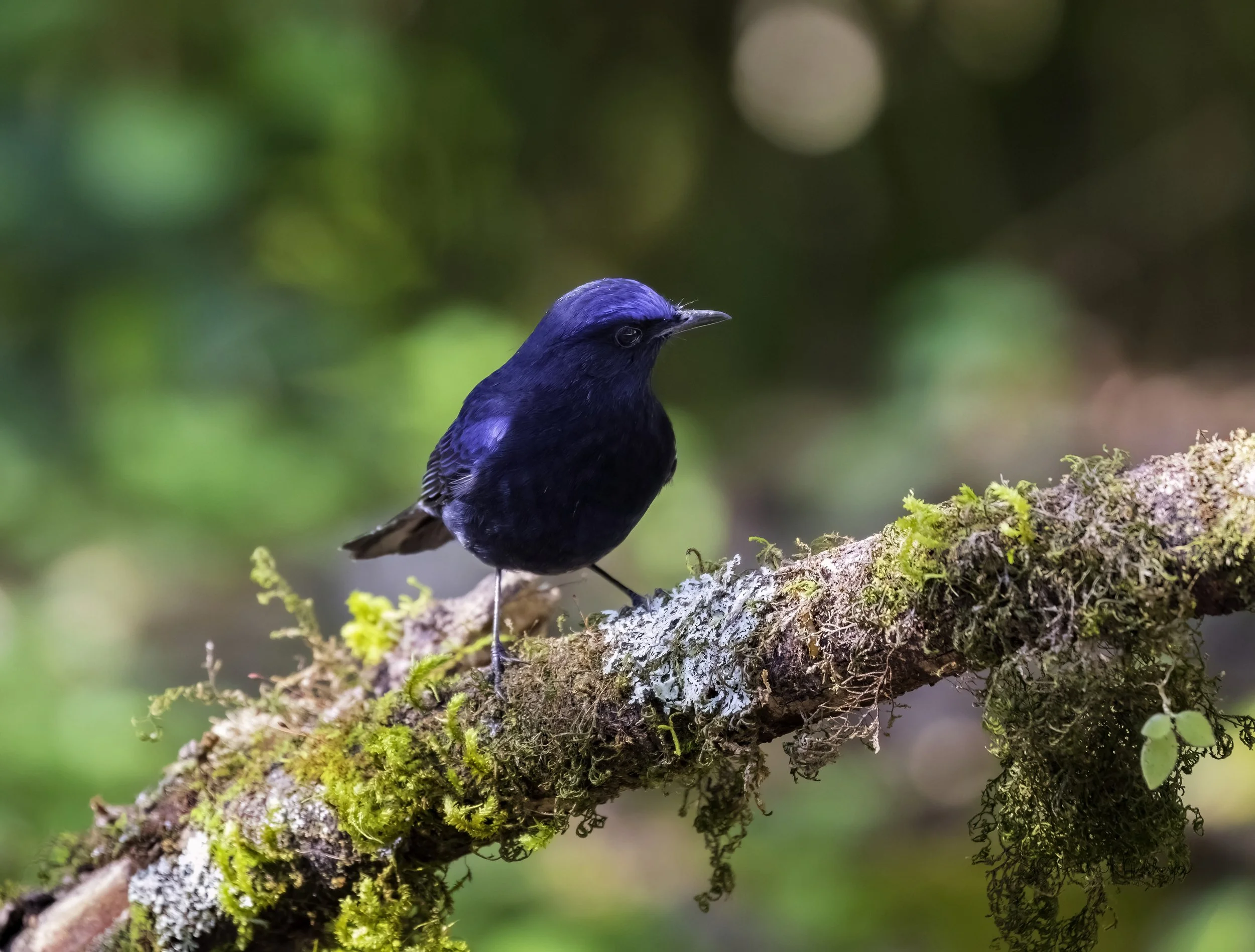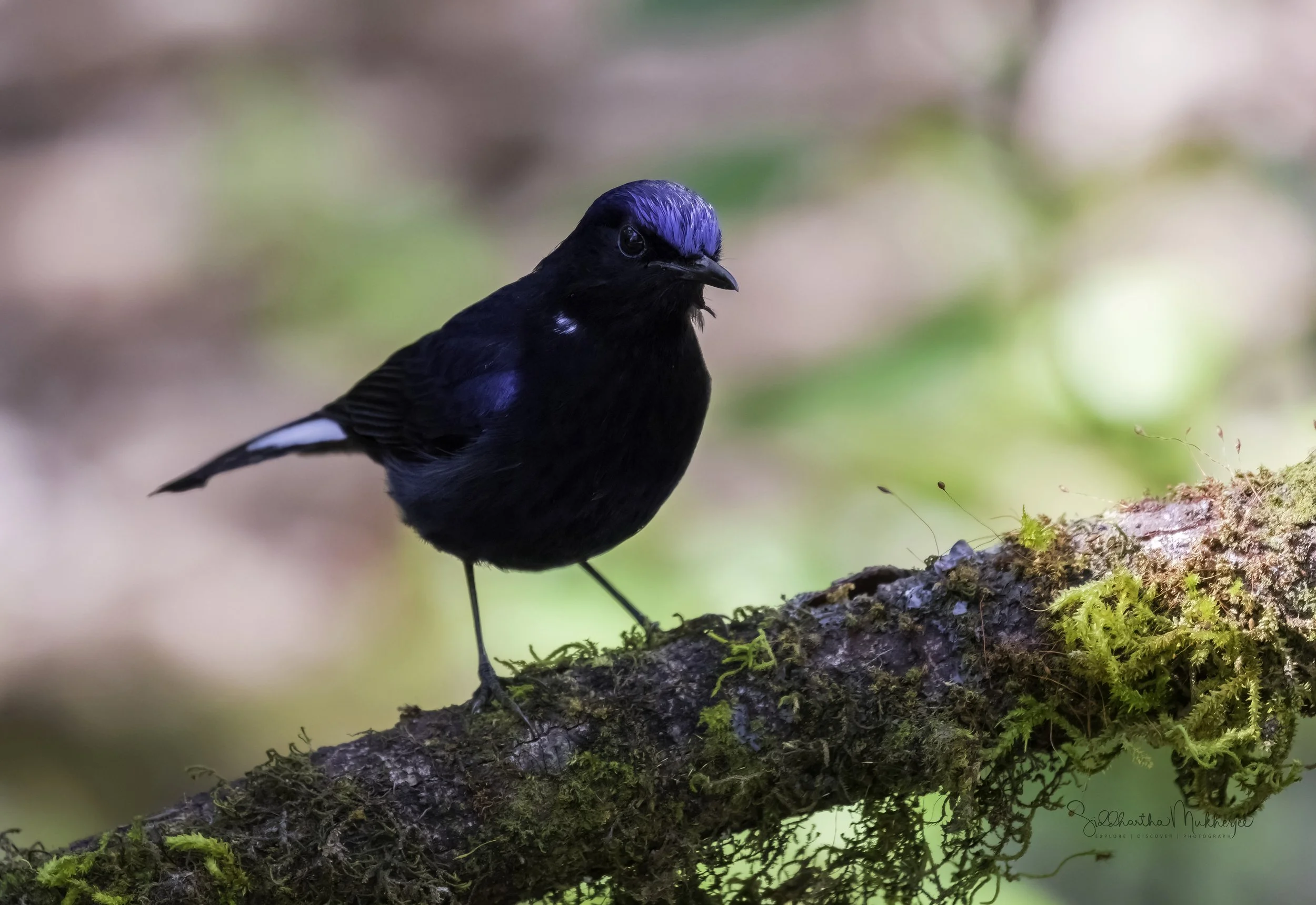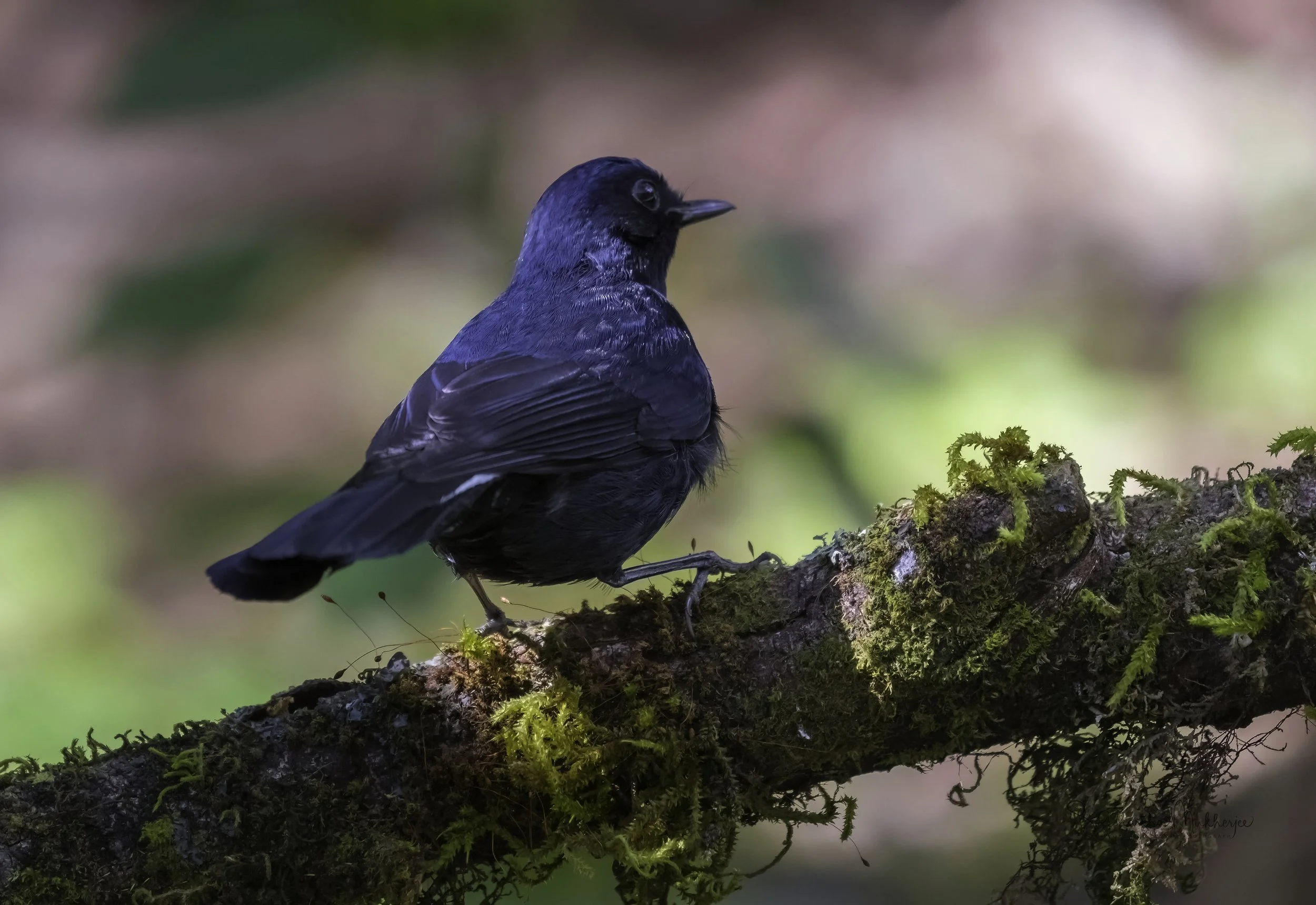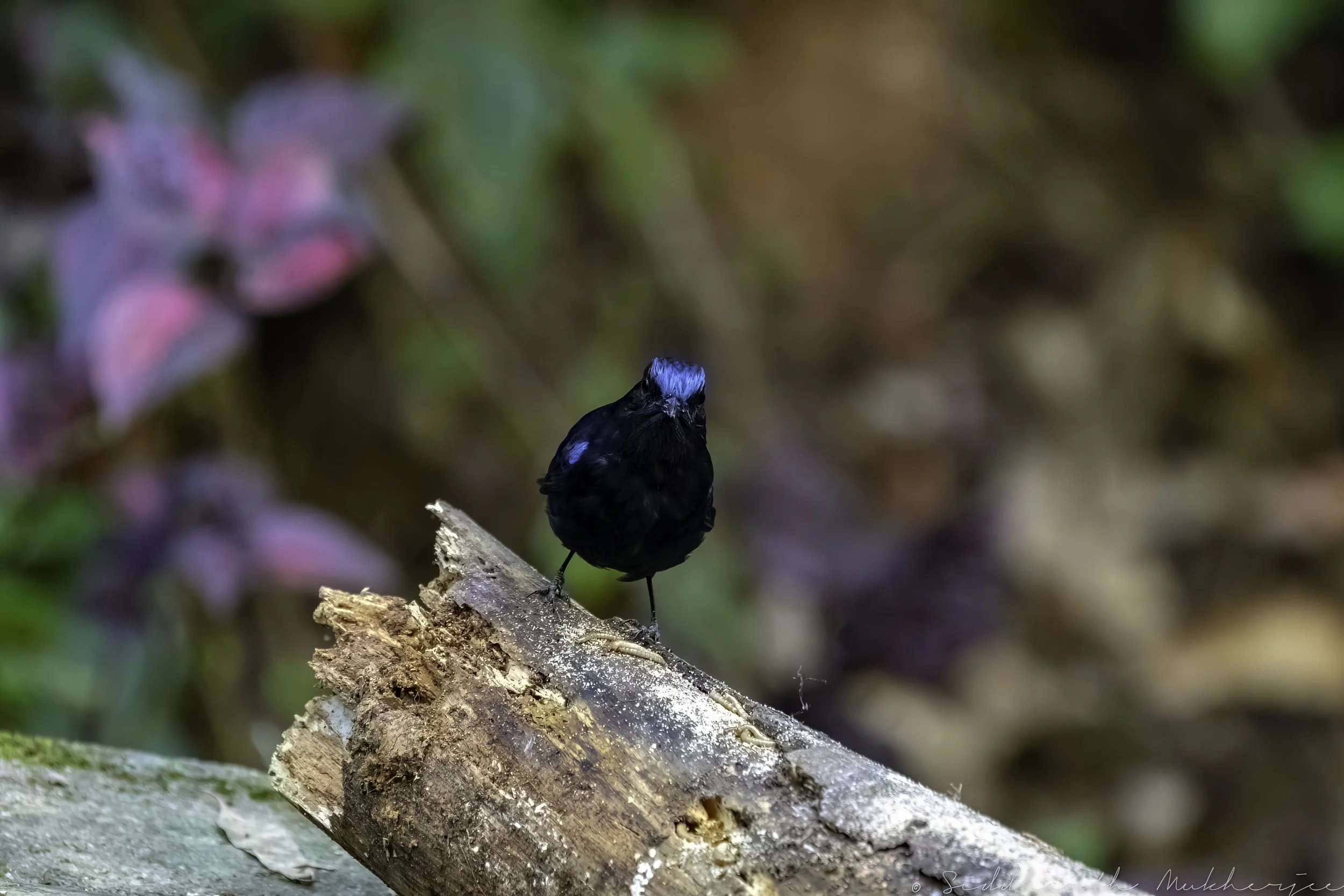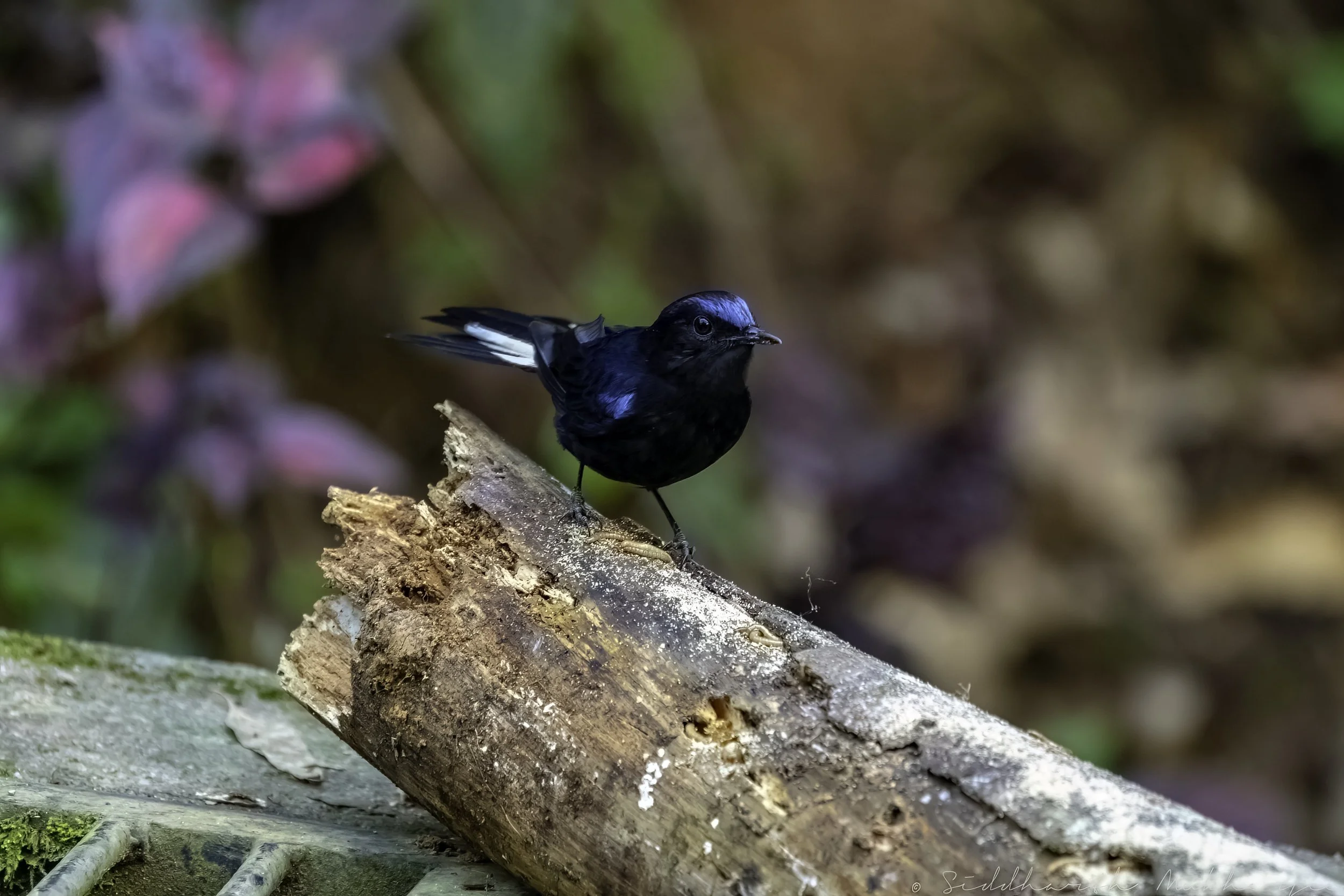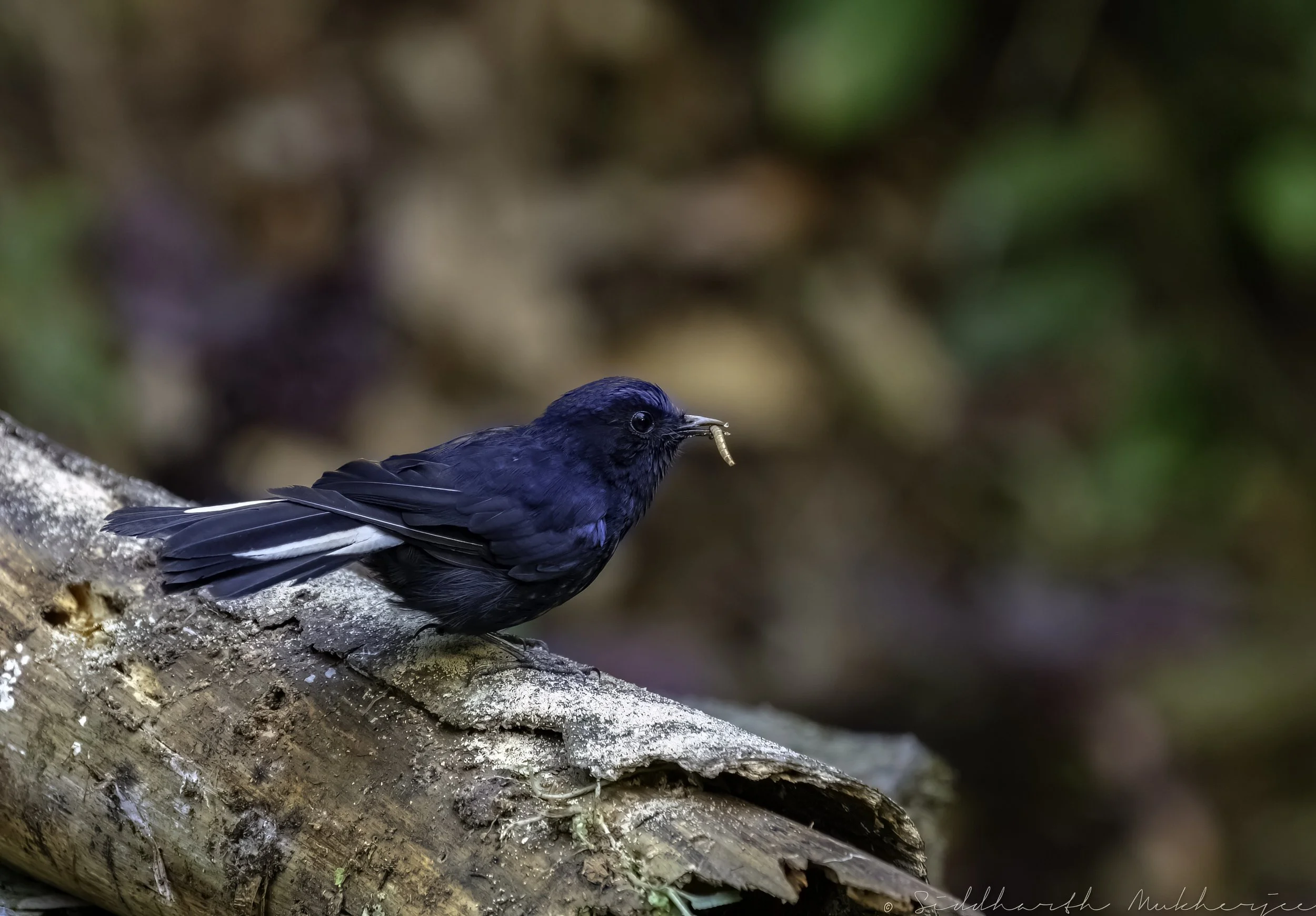White-tailed Robin
Myiomela leucura leucura
Doi Ang Khang, Chiang Mai, Thailand
Today is another stunner from the large family of Old World Flycatchers, the Muscicapidae, a group of small passerine birds mostly restricted to the Old World (Europe, Africa and Asia) - the White-tailed Robin, a bird often mistaken for the Large Niltava - especially when the white tail patch is not visible. The White-tailed Robin’s ground-dwelling habits and horizontal posture distinguish it from the Large Niltava.
The Old World Flycatchers are mainly small arboreal insectivores, many of which, as the name implies, take their prey on the wing. The family includes 344 species and is divided into 51 genera. Old World flycatchers live in almost every environment with a suitable supply of trees, from dense forest to open scrub, & even the montane woodland of the Himalayas. The more northerly species migrate south in winter, ensuring a continuous diet of insects.
The appearance of these birds is very varied, but they mostly have weak songs and harsh calls. They are small to medium birds, ranging from 9 to 22 cm in length. Many species are dull brown in colour, but the plumage of some can be much brighter, especially in the males. Most have broad, flattened bills suited to catching insects in flight, although the few ground-foraging species typically have finer bills. Depending on the species, their nests are either well-constructed cups placed in a tree or cliff ledge, or simply lining in a pre-existing tree hole. The hole-nesting species tend to lay larger clutches, with an average of eight eggs, rather than just two to five.
Also, this White-tailed Robin was among my first publications with the then Wild Bird Revolution, led by Dr. Steve Boyes, on the National Geographic Blog. I had photographed the bird on January 19, 2019 and it was published on May 31, 2019. It was published under the section “Blue” which talked about how birds achieved the colour #blue in their feathers.
Blue
For many years, scientists have known of how the red or yellow colour of feathers is achieved. These colours come from pigments in food the birds eat, meaning that they are diet based. One of the challenges in avian colour has been to figure out how the #blue colour is achieved. Interestingly, it came to light when scientists reported that most birds look blue for the same reason the sky looks blue: “Red and yellow wavelengths pass through the atmosphere, but shorter blue wavelengths bounce off of particles and scatter, emitting a blue glow in every direction”.
Read about all the Flycatchers I have documented.
The Dois of northern Thailand have been very kind to me from a birding perspective. There are so many I have already talked about and so many still remaining. I have written an overview here on the Birds of the Dois and have started to break them up into individuals like the Gray-backed Shrike, Long-tailed Shrike, Spectacled Barwing, Siberian Rubythroat, the stunning Mrs. Gould’s Sunbird and the numerous other birds I have seen here.
About 685 kilometers to the north of Bangkok lies the former seat of the ancient Lanna Kingdom and is considered one of the most scenic provinces in the country given its mountain ranges, valleys, flora and fauna. A land of misty mountains and colourful hill tribes, a playground for seasoned travellers, and a delight for adventurers. Despite its relatively small size and blissful calm, Chiang Mai truly has it all, a city that is still firmly Thai in its atmosphere and attitude. It is the second-largest changwat (province) of Thailand. Bordered by Chiang Rai to the northeast, Lampang and Lamphun to the south, Tak to the southwest, Mae Hong Son to the west and the Shan State of Myanmar to the north. Located in a verdant valley on the banks of the Ping River, Chiang Mai was founded in 1296 as the capital of the ancient Lanna Kingdom. Today it is a place where past and the present seamlessly merge with modern buildings standing side by side with venerable temples. Of all the places I have visited in Thailand, Chiang Mai with its forests and mountains and the historic city of Ayutthaya are by far my favourites.
The word Chiang itself is from North Thai, or Lanna, meaning town or city and Mai means new making Chiang Mai the New City as it was founded later than Chiang Rai, the earlier capital of King Meng Rai. The districts in the province are called amphoe, and sub-districts are called tambon. Another twist is the use of Nakhon (or Nakorn or Nakhorn), derived from the Sanskrit word Nagara, also means city, though strictly speaking it refers to a capital city such as Nakorn Sri Ayutthaya (more on Ayutthaya later). Indeed to emphasise its former status you may sometimes see Chiang Mai referred to as Nakhon Ping. Other common names of geographical features include mae (river) and doi which is north Thai for mountain - for example Doi Inthanon and Mae Ping.
The four Dois we spent our time on were Doi Inthanon, Doi Ang Khang, Doi Luang and Doi SanJu.
Doi Ankhang is a mountain belonging to the Himalayan foot hill range, located at the Myanmar (Burmese) border. The highest point is 1,928 metres. Although chiefly deforested, this is still one of Northern Thailand’s most prominent birdwatching areas, due to more and rarer bird species being in residence, as well as being a popular resting point for numerous migratory birds. Examples of rare and beautiful birds inhabiting this area include the Mountain Bamboo Partridge, Spot-breasted Parrotbill and the Red-faced Liocichla. It is not so uncommon to spot the Red-tailed Laughing Thrush here. Around The Royal Agricultural Project Station you can find Brown, Burmese and Long-tailed Shrike and also Fire-capped Tits and Silver-eared Mesia & the Maroon Oriole.
We didn’t have the good fortune to see all the species on all the mountains, that would have been impossible, but we did rack up quite a number of species - about 95 of them. Read about them here.
With that said, meet this brilliant flycatcher from the mountains of Chiang Mai, one of many I have seen there.
‡‡‡‡‡
White-tailed Robin
The White-tailed Robin (Myiomela leucura) is an Old World Flycatcher in the family Muscicapidae. It ranges across the northern regions of the Indian subcontinent and adjacent areas of Southeast Asia. It is found in Bangladesh, Bhutan, Cambodia, India, Laos, Malaysia, Myanmar, Nepal, Taiwan, Thailand & Vietnam. Its natural habitats are subtropical or tropical moist lowland forest and subtropical or tropical moist montane forest. It is a stately ground-dwelling songbird of dense mid- to upper-elevation broadleaf and mixed forests, particularly in areas with bamboo. The male is a striking rich blue with brighter patches on the crown and wings, while the female is brown overall with a white throat and belly. Both sexes have large white patches on sides of tail that flash brightly in the gloom of the forest when fanned - clearly visible in the first photo. When the white tail patch is not visible, its ground-dwelling habits and horizontal posture distinguish the male from the similar Large Niltava. The song is beautiful, a short series of ringing silvery whistles, usually rising. Most common call is a high thin “tzin.”
The White-tailed Robin is about 17–19 cm long and weighs between 24–30 grams. The male of the nominate race is bluish black, with a shiny mid-blue forehead to brow and shoulder patch, a very small white neck patch (often concealed), white oval-shaped basal two-thirds of outer tail. The bill and legs black. The female has same tail pattern as the male, but is mouse-brown above, buff-brown below, with an indistinct white throat crescent. However, some individuals are apparently much darker, at least in parts of the range. The juvenile is blackish brown with buff spotting above, buff streaking below, with a tail pattern as the female. The race montium is very slightly smaller than nominate, with the female with more olive-toned and less buffy-brown, breast.
The White-tailed Robin is often placed in Cinclidium. Hitherto treated as conspecific with M. cambodiana. Two subspecies are recognized.
Myiomela leucura leucura: Distributed in Central and Eastern Himalayas from West Central Nepal to North East India (Arunachal Pradesh and South Assam hills) East to Central China (North to South East Gansu and South Shaanxi), South to Myanmar, North West and North Thailand, Laos, Vietnam, Peninsular Malaysia and Hainan.
Myiomela leucura montium: Distributed in Taiwan
White-tailed Robin (Cambodian)
The White-tailed Robin (Cambodian) is also about 17 cm long and weighs between 17·5–25·5 grams. The male is almost entirely a dark slaty blue, with a very small white neck patch (often concealed) and a somewhat bluer shoulder patch (often indistinct); basal two-thirds or so of outer tail is white, the iris is dark brown and the bill and legs are slate or black. The female is dark olive-brown above including wing-coverts, becoming warmer on mantle to rump, with pale tips to uppertail-coverts; off-white lores and narrow off-white eyering. The cheeks and ear-coverts with buffish feather tips, and lighter buffish brown below, with dark-streaked white throat, greyish and whitish belly. The tail is a dark grey-brown, with the outer two-thirds white at base (pattern as that of the male). The juvenile is blackish brown with buff spotting above, buff streaking below, tail as female.
The White-tailed Robin (Cambodian) is often placed in Cinclidium. Hitherto treated as conspecific with M. leucura, but differs in its lack of a shiny blue forehead; slatier body plumage; shorter wing (effect size –2.31, score 2); and longer bill (effect size 1.24; score 1). Possibly parapatric with M. leucura. Monotypic.
Myiomela leucura cambodiana: Distributed in South East Thailand and South Cambodia (Cardamom Mountains and Elephant Mountains).
The White-tailed Robin prefers thick shady, bushy or scrubby undergrowth of dense moist broadleaf evergreen forest in lower cloud zone, often in bamboo and/or river-valley bottoms near running water. It breeds in the Himalayas at 1200–2700 m, wintering from foothills to 1500 m; in Taiwan at 1000–2500 m, descending to c. 200 m in winter. This is a mostly sedentary bird with some altitudinal and minor short distance movements. While the White-tailed Robin (Cambodian) inhabits dense broadleaf evergreen forest, often in areas of bamboo, at 1000–1400 m and is thought to be sedentary.
The White-tailed Robin feeds on insects, berries foraging largely on the ground, but also in low underbrush, and are more arboreal than the Tarsiger bush-robins. They are very secretive and can be seen constantly opening and shutting its tail. The White-tailed Robin (Cambodian) has little information available. Its diet too are insects and berries and this too is very secretive. It forages on the ground and in low undergrowth; sometimes in bushes and trees.
White-tailed Robins (White-tailed) song is a series of short well-spaced phrases consisting of thin silvery liquid quavering warble of 7–8 notes, reminiscent of (but deeper and flutier than) the song of the Lesser Shortwing (Brachypteryx leucophris): “tey-tlee-i-ta-wey-i”. The calls include thin 1–2-note whistles and low “tuc”. The White-tailed Robins (Cambodian) song is poorly known, but seems not to differ significantly from that of M. leucura, a short thin warbling phrase of up to eight notes. Call a low “tuk”, also low whistles.
For the White-tailed Robin (White-tailed) breeding is presumed to be between April –June, reportedly into August, in the Himalayas. April onwards in China and as late as September in Myanmar. Between March–April in Peninsular Malaysia. The nest is either domed or cup-shaped, made of grass and mud, placed in shrub close to ground or under rock ledges or fallen trees, or in a hole in the bank. 2-5 fairly glossy or glossless white or pale pink to pinkish brown eggs are laid, plain or with faint darker pinkish freckles, raning in size 20·7–25·2 mm × 15·8–17·7 mm. For the White-tailed Robin (Cambodian) there is no published information, other than that males were in breeding condition in March in Cambodia. Other details thought unlikely to differ significantly from those pertaining to M. leucura.
The White-tailed Robin (White-tailed) is not globally threatened and is listed as Least Concern. It is locally common in India and sparsely distributed in scattered small populations in Nepal. It is uncommon in Myanmar, Thailand, Peninsular Malaysia and Indochina. The status in China is unclear, although it is reportedly common in parts of Yunnan. Global population size has not been quantified, but Taiwan (race montium) is estimated to hold c.10,000–100,000 breeding pairs. The species is suspected to be in decline owing to continuing habitat destruction and deterioration.
The White-tailed Robin (Cambodian) is also not globally threatened and listed as Least Concern. Their status is poorly known, but this species is considered likely to be relatively rare overall. In Cambodia, the species occurs within Phnom Samkos Wildlife Sanctuary, where it is one of the commonest members of the forest understorey within its elevational range. A formal assessment of its population level and conservation status is urgently required, and the possible existence of any major threats, such as habitat loss, needs to be determined..
‡‡‡‡‡
Related Posts

